- Author: Kathy Keatley Garvey

Oakland parks supervisor Victoria "Tora" Rocha, founder of the Oakland-based Pollinator Posse, was contemplating how to help our struggling pollinators--she's always thinking of them--and originated this idea: “Tees for Bees.” Whack a seed ball (packed with wildflower seeds and a few milkweed seeds) from a golf course to its outlying open space areas. Seeds germinate; pollinators come. It's a win-win strategy for pollinators and the environment. And a little exercise for the golfers!
The first-ever “Tees for Bees” will take place from 12 noon to 3 p.m. Monday, April 3 on the Lake Chabot Golf Course, 11450 Golf Links Road, Oakland. The goal is to spread California native wildflowers into the open space areas at the Lake Chabot Golf Course and turn them into thriving essential habitat for native bees and butterflies, Rocha says.
“Using seed balls created from local clay soil and wildflower seeds, Ace Kids' Gold participants and community volunteers will launch the balls into the air, spreading seeds across the area,” Rocha says, inviting everyone to “Join us on April 3 as we help this environment, learn about local wildlife and the pollinator process and have some fun playing golf.”
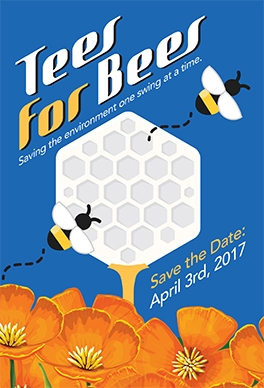
Rocha founded the Pollinator Posse in 2012 to hand-rear monarch butterflies at Lake Merritt to increase their survival rates. (See National Wildlife Federation's tribute to the Mayor of Oakland and the Pollinator Posse in November.) Last Saturday, March 25, Rocha and fellow Posse members discussed butterfly gardening at the first-ever "Let's Wing It" Butterfly Summit at Annie's Annuals and Perennials, Richmond. Rocha also explained the "Tees for Bees" project and the Posse's plans to become a statewide organization.
In fact, the Posse is in the process of contacting UC Master Gardeners to launch “Tees for Bees” at golf courses throughout the state's 58 counties. Other organizations, including 4-H and garden clubs, are also expected to join the grassroots movement. Everyone, Rocha said, is welcome.
The end results could be spectacular--bumble bees and other native bees foraging on phacelia, lupine and the California golden poppy and other native wildflowers. Honey bees, butterflies and flower flies (syrphids) and other pollinators joining in.
Meanwhile, the first "Tees for Bees" is Monday, April 3. No golf balls: seed balls. For more information on the Lake Chabot Golf Course event, access teesforbees.eventbrite.com or contact Preston Pinkney, program director at (510) 351-0391 or ppinkney@oaklandnet.com.
To learn more about the Pollinator Posse, "like" or join the Pollinator Posse public Facebook page.
Related Links:
Tora Rocha Greens Up Oakland (Oakland Magazine)
National Wildlife Federation Tribute to Pollinator Posse
Pollinator Posse's Outdoor Classroom
Tora Rocha Interview (Garden Tribe)

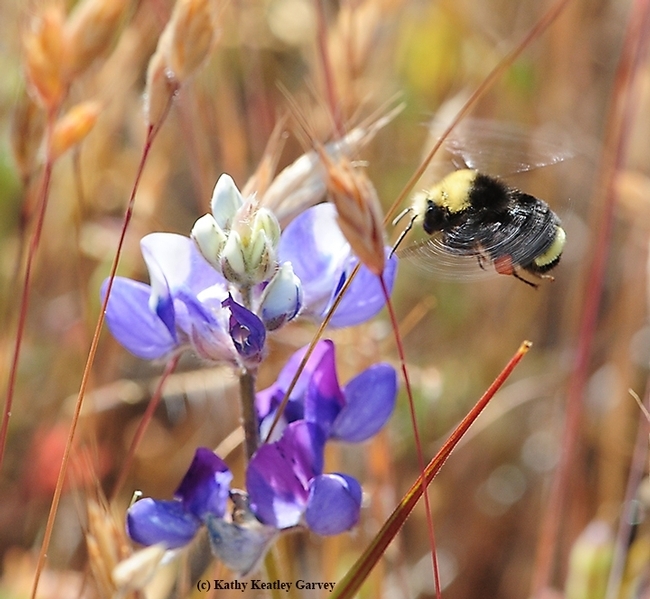
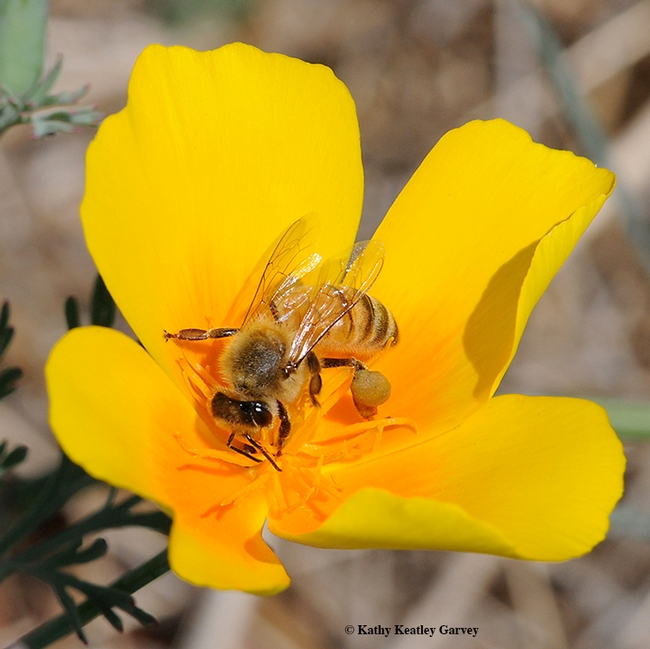
- Author: Kathy Keatley Garvey
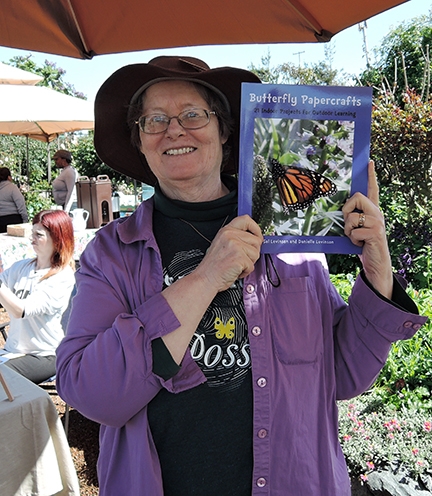
And they did.
But this event wasn't "winged"; it was well planned and rooted in educational information.
Wings? A reference to the flutter of the ever decreasing butterfly wings. The occasion? The inaugural "Wing It" Butterfly Summit, held last Saturday, March 25 at Annie's Annuals and Perennials in Richmond.
A panel of butterfly experts fielded questions focused on "What can we do to help the declining monarch population, as well as other struggling butterfly populations?" Among the speakers were Mia Monroe of the Xerces Society of Invertebrate Conservation, Tora Rocha of the Pollinator Posse and Suzanne Clark of the UC Master Gardeners, Sonoma County.
The speakers advocated that we garden for butterflies by planting their host plants (where adult butterflies lay their eggs and where the offspring subsist) and by planting nectar plants (food source of adult butterflies). Other points: We must preserve their habitats; help establish food-embellished migratory corridors for monarchs heading to overwintering sites; avoid the use of pesticides; and support research.
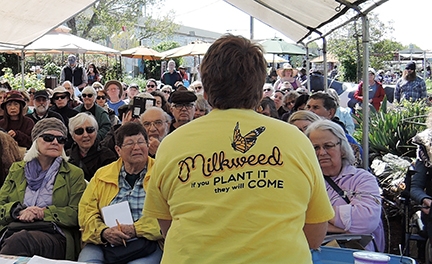
The Pollinator Posse, geared toward protecting pollinators and creating habitat, also urged that we all get involved in conservation efforts, including rearing monarchs--bringing in the eggs and caterpillars from the outdoors to protect them from predators. Many "Monarch Moms" and "Monarch Dads" use zippered meshed containers, keeping the offspring safe from tachinid flies and wasps that lay their eggs in caterpillars and chrysalids.
Facilitator Mia Monroe, volunteer with the Xerces Society, coordinator of the Western Monarch Thanksgiving Count, and Muir Woods Park Ranger, pointed out the alarming monarch statistics:
In less than 20 years, the number of monarchs at overwintering sites in California has declined by 74 percent, a figure comparable to what's happening to the overwintering population in Mexico.
Among the other speakers:
- Amber Hasselbring, executive director of San Francisco's Nature in the City, who is establishing Green Hairstreak corridors in San Francisco neighborhoods.
- Andy Liu, landscape architect and garden designer specializing in butterfly habitat
- Sal Levinson, author, entomologist and noted speaker on butterfly habitats. She authored Butterfly Papercrafts Butterfly Papercrafts: 21 Indoor Projects for Outdoor Learning, a book geared for youngsters ages 5-12 and described as a key educational resource for teachers.
- Suzanne Clarke, UC Master Gardener from Sonoma County, who urged the participants to plant milkweed for monarchs: “Milkweed: If you plant it, they will come.” She sported a yellow t-shirt lettered with just that and a monarch image.
- Tim Wong, aquatic biologist at the California Academy of Science, and Barbara Deutsch who are involved in repopulating pipevine swallowtails in the San Francisco area
The summit drew some 250 to 300 people, who listened to the talks, visited the educational booths, learned about the metamorphosis from egg to caterpillar to chrysalis to adult, and what to plant to attract butterflies. Vendors offered books, posters, T-shirts, plants and butterfly habitats.
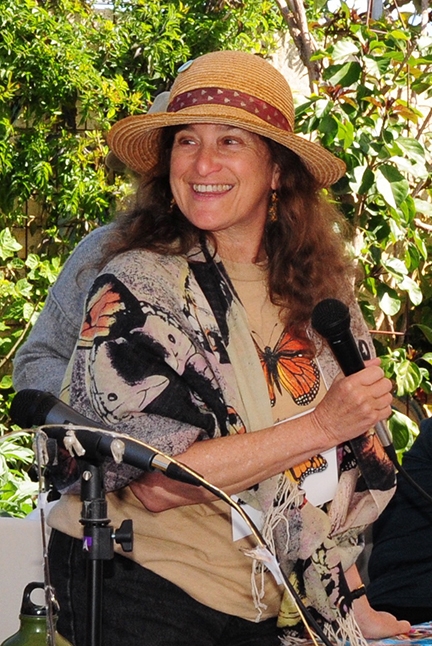
- Aesculus californica (California buckeye): Host plant of Echo Spring Azure butterfly
- Angelica tomentosa (woolly angelica) and A. archangelica: Anise Swallowtail
- Anisodontea sp. 'Strybing Beauty" (cape mallow): Vanessids, such as Vanessa atalanta, the Red Admiral
- Antirrhinums (snapdragons): Common Buckeye
- Asclepias (milkweed): Monarchs
- Asters: Field Cresentspot
- Ceanothus (all species): California Tortoiseshell, Echo Spring Azure, Gray Hairstreak
- Daucus carota (wild carrot, Queen Anne's lace): Anise Swallowtail
- Eriogonums (California buckwheat): Gray Hairstreak, Acmon Blue
- Foeniculum vulgare (fennel): Anise Swallowtail
- Grasses (California native Boutelouas, Festucas, Melicas, Muhlenbergias, Nassellas): Skippers
- Hollyhocks: Painted Lady, West Coast Lady, Common Checkered Skipper, Gray Hairstreak
- Keckiellas: Checkerspots, Common Buckeye
- Lathyrus (perennial natives, such as sweet pea): Silvery Blues
- Lavatera assurgentiflora (malvia): West Coast Lady
- Lippia repens (mat grass): Common Buckeye
- Lotus crassifolus variety otayensis (also known as Otay Mountain lotus): Acmon Blue
- Lupines (native perennial lupines like albifrons, arboreus, latifolius parishii, polyphyllus, propinquus, sericatus); Acmon Blue, some hairstreaks
- Mimulus aurantiacus (sticky monkey flower): Checkerspots, Common Buckeye
- Nasturtiums: Cabbage White
- Passiflora caerulea and some others (avoid bright red varies as they may be toxic): Gulf Fritillaries
- Penstemons: Checkerspots, Common Buckeye
- Sidalceas (checkered mallow): Painted Lady, West Coast Lady, Common Checkered Skipper, Gray Hairsteak
- Sphaeralceas (mallow): Gray Hairstreak, Painted Lady, West Coast Lady, Common Checkered Skipper
Good Bay Area nectar plants for butterflies, according to the Butterfly Summit, include California buckeye, brodiaecas (cluster lilies), milkweed, asters, butterfly bush (Buddlejas), cosmos, coreopsis, echiums, blanketflower (Gaillardia), dahlias, mint, rosemary, lavenders, marigolds, rosemary, phacelias, sunflowers, Mexican sunflower (Tithonia rotundifolia), Salvia clevelandii, Gilia capitata, Suromgas (lilac), verbenas, and zinnias.
Monarchs are especially fond of these nectar sources: butterfly bush (Buddleja), Mexican sunflower (Tithonia), asters, Echiums (Echium fastuosum or Pride of Madeira), and verbenas.
The National Wildlife Federation (NWF) says that "providing milkweeds and other nectar-rich flowers that bloom where and when monarchs need them is one of the most significant actions you can take to support monarch butterfly populations."--Monarch Nectar Plants, Inland California.
NWF also urges everyone to plant natives: "Although monarchs use a variety of nectar plant species, including exotic invasives such as ice plant and cape ivy, we recommend planting native species. Native plants are often more beneficial to ecoystems, are adapted to local soils and climates, and help promote biological diversity. They can also be easier to maintain in the landscape, once established."
Xerces Society offers a wealth of information on its website on monarchs and milkweed.
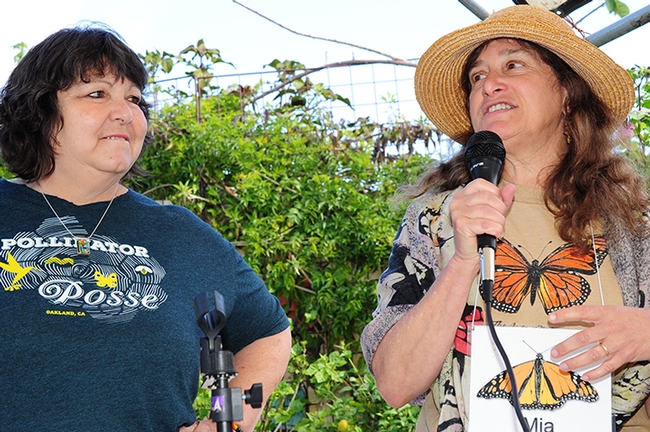
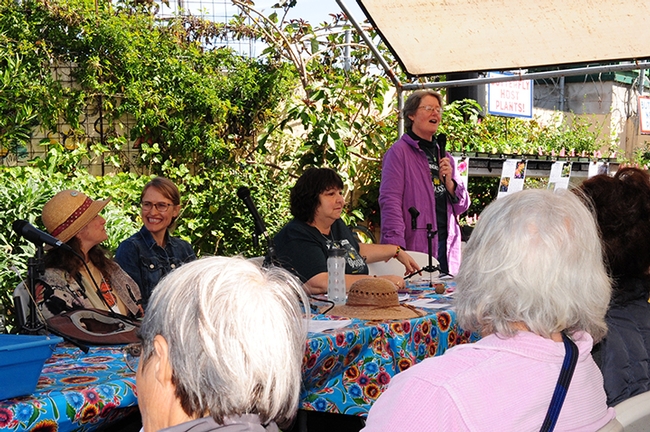
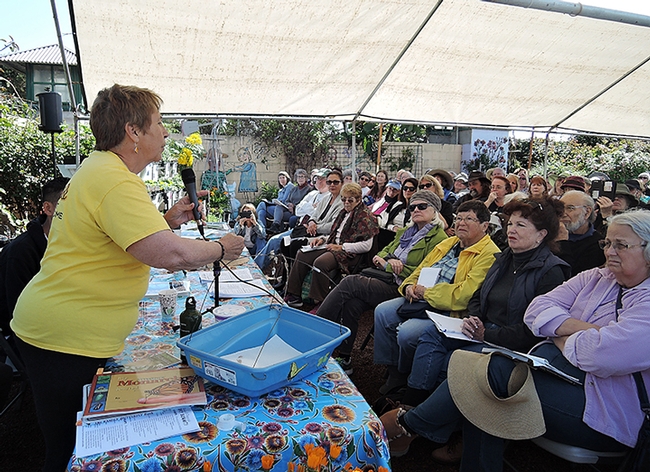
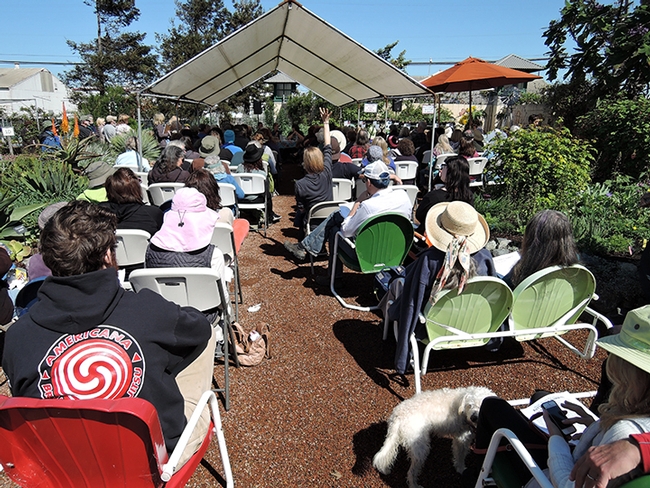
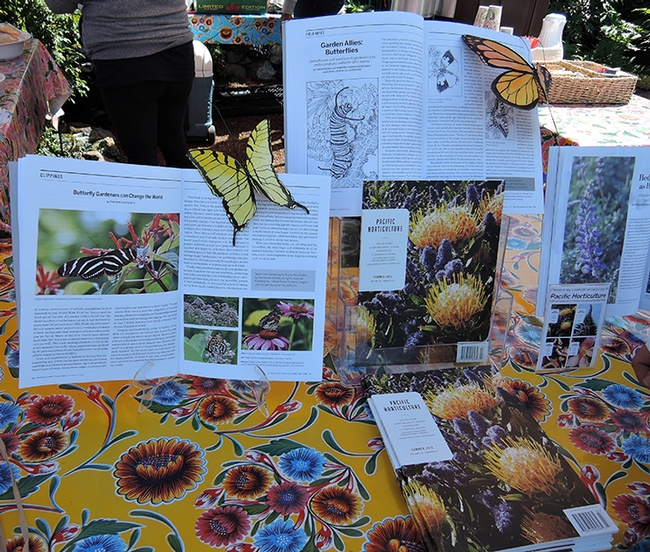
- Author: Kathy Keatley Garvey
She's a butterfly magnet.
When Oakland parks supervisor Tora Rocha, known as "The Monarch Queen" and "The Butterfly Whisperer," (she rears monarchs and encourages everyone to do so), visited the Häagen-Dazs Honey Bee Haven at the University of California, Davis, on Thursday, butterflies seemed to float in from everywhere!
The Western Tiger Swallowtail, Painted Lady, Gulf Fritillary and even the Cabbage White fluttered around her head.
But that Western Tiger Swallowtail...that newly emerged Western Tiger Swallowtail...
Aglow in yellow and fringed with black, it headed over to the Verbena to sip some flight fuel: sweet nectar. A brisk wind threatened to dislodge its hold but it refused to budge from its buffet.
The Häagen-Dazs Honey Bee Haven is the UC Davis Department of Entomology and Nematology's half-acre bee friendly garden on Bee Biology Road. Planted in the fall of 2009, it is located next to the Harry H. Laidlaw Jr. Honey Bee Research Facility, west of the central campus. (See history of the bee garden.)
And on Saturday, May 2 there will be a fifth anniversary celebration from 10 a.m. to 2 p.m. You're invited! (Yes, it's free and open to the public.) You'll see bee observation hives and beekeeping demonstrations. You'll learn what to plant for bees. Bee scientists will show you how to observe and identify bees, and show you native bee condos, also called "bee hotels" or "bee houses."
Besides the honey bees, bumble bees, sweat bees, carpenter bees and other pollinators, there's a good chance you'll see such butterflies as the Western Tiger Swallowtail (Papilio rutulus) sailing over the state-of-the-art fence that Eagle Scout Derek Tully and his assistants crafted.

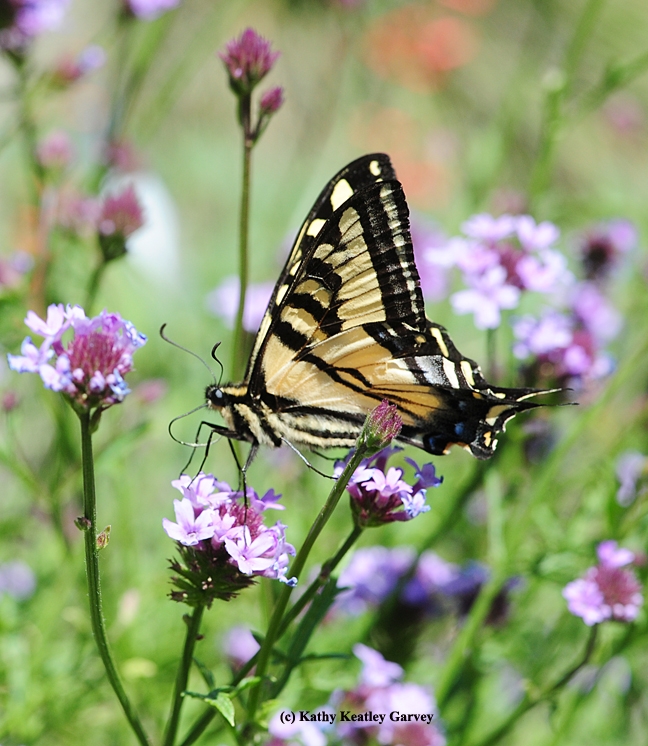
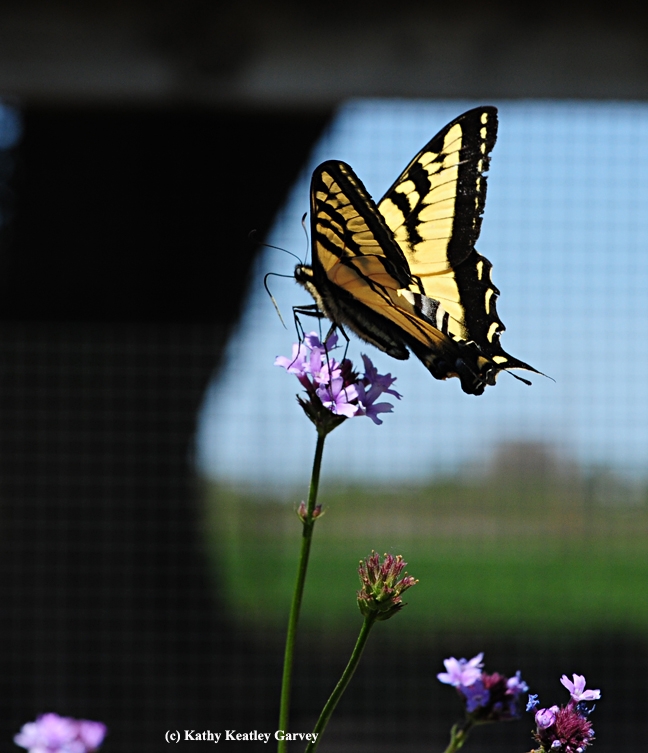
- Author: Kathy Keatley Garvey
It's good to see so many scientists and citizen scientists taking an avid interest in monarchs.
The monarch butterfly (Danaus plexippus), probably the most recognizable of all the butterflies, is known for its long migratory route from Canada to Mexico.
We spotted a beautiful monarch last Sunday afternoon in Fair Oaks, Calif. as it foraged for nectar from an appropriately named "butterfly bush" (Buddleia davidii).
We watched the monarch glide, drop down, and nectar on the blossoms--a beautiful sight to see. The larval host plant is the milkweed, also a beautiful sight to see--especially when the caterpillars "decorate" the leaves. From an egg to a caterpillar to a chrysalid to an adult, the life cycle should be one of the seven wonders of the world.
Meanwhile, there's a major monarch event taking place Friday, June 6 at the Chicago Botanic Gardens. It's an all-day symposium about monarchs and their conservation, "Make Way for Monarchs: Alliance for Milkweed and Butterfly Recovery." Speakers include Lincoln Brower, Karen Oberhauser, Chip Taylor, Gary Nabhan, and Scott Hoffman Black. An organization called makewayformonarchs.org conducts "research on monarch butterfly recovery and promote positive, science-based actions to avert food web collapse in the milkweed community and the further demise of the monarch migration to Mexico," according to the Chicago Botanic Garden website promoting the Friday event. "They aim to promote social engagement to implement tangible solutions in midwestern landscapes through collaborative conservation."
There's also a MonarchWatch organization dedicated to restoring the Monarch butterfly populations.
More closer to home, Oakland parks supervisor Tora Rocha of the Pollinator Posse is spearheading a drive to rear monarchs. She posts many photos of the caterpillars and adults on the Pollinator Posse Facebook page. Check out the YouTube video featuring her, the monarchs and the Pollinator Posse.
"It's addicting," she says.
Want to help? Listen to the YouTube video and accept her invitation "to come join us."



- Author: Kathy Keatley Garvey
Monarchs and milkweed are in the news again.
As well they should be.
The declining monarch population, coupled with the decreasing scarcity of their host plant, the milkweed, is disturbing. The larvae of the monarch butterfly (Danaus plexippus) feed exclusively on milkweeds. No milkweed, no monarchs.
Butterfly expert Art Shapiro, distinguished professor of evolution and ecology at UC Davis, says the problem hasn't totally reached California yet. "The 'dearth of milkweed' problem is primarily an East/Midwest problem, due to increased use of Roundup since the introduction of 'Roundup-ready' GM crops. It's quite real. There is no such problem out here--at least yet--but there is a new milkweed pathogen that may cause one! Dave Rizzo (UC Davis Department of Plant Pathology) and I hope to publish on it shortly. No harm in planting milkweeds, but the problem isn't a California one, at least not yet."
Journalist-photographer Alessandra Bergamin, writing in the Feb. 18 edition of Bay Nature: Exploring Nature in the San Francisco Bay Area, says that "the number of monarchs overwintering in Mexico's Oyamel fir forest has reached an all-time low," quoting the World Wildlife Fund in Mexico. "The reports suggest that factors such as loss of habitat, climate change and use of insecticides have contributed to the decline."
The situation in California, however, looked better than bleak last year. A little better. "Monarch butterfly populations in California's coastal overwintering sites showed a slight — and surprising — rebound in 2013 after more than a decade of dwindling numbers," Bergamin wrote. "The 2013 Western Monarch Thanksgiving Count tallied 211,275 monarchs at 162 sites from Sonoma County to San Diego County, up from 144,812 the year before."
Over the past two decades, however, the Western monarch population has dramatically declined in California, she pointed out in her article, "Western Monarch Population Hanging On." The downward trend is expected to continue.
Meanwhile, the Xerces Society for Invertebrate Conservation, headquartered in Portland, Ore., has posted a seed finder resource so folks can find milkweed seed in their state and plant the seeds in their gardens, parks, landscapes, restoration areas and on farms.
Oakland parks supervisor Tora Rocha is taking it one step further. She is collecting the monarch caterpillars, rearing them, and releasing the adults in the Lakeside Gardens at Lake Merritt. Her newly formed Pollinator Posse has sparked the interest of volunteers, who range from school children to city council members. They all want to save the monarchs.
Rocha bans pesticides and herbicides from her pollinator gardens. “For the past fifteen years the gardens have had a pesticide-and herbicide-free policy,” Rocha told writer Constance Taylor of Wild Oakland, which offers free, Oakland-centered environmental education. “We also rely on volunteers contributing thousands of hours to keep our parks maintained--about 75% of the work is done by volunteers.”
Rocha says it's not enough to be a custodian of the land: it's important to be a steward of the land and protect the pollinators. She's created a video, posted on YouTube, that explains what she and the other Pollinator Posse members do.
Rocha and colleague Eddie Dunbar of the Insect Sciences Museum of California and a fellow Pollinator Posse member, recently visited UC Davis to share information with Shapiro and native pollinator specialist Robbin Thorp, emeritus professor of entomology.
 Another person keen on butterflies is Sally Levinson of Berkeley, who writes a blog on butterflies and is publishing educational videos, including "Secret Lives of Monarchs" and "In the Company of Wild Butterflies." As a graduate student at UC Riverside, Levinson studied with major professor Bruce Hammock, now a distinguished professor of entomology at UC Davis. (He maintains a joint appointment with the Department of Entomology and Nematology and the UC Davis Comprehensive Cancer Center.)
Another person keen on butterflies is Sally Levinson of Berkeley, who writes a blog on butterflies and is publishing educational videos, including "Secret Lives of Monarchs" and "In the Company of Wild Butterflies." As a graduate student at UC Riverside, Levinson studied with major professor Bruce Hammock, now a distinguished professor of entomology at UC Davis. (He maintains a joint appointment with the Department of Entomology and Nematology and the UC Davis Comprehensive Cancer Center.)
As an aside, the Bohart Museum of Entomology at UC Davis offers a "Got Milkweed?" t-shirt spotlighting the monarch and its host plant. The work of doctoral candidate Fran Keller and Bohart volunteer/naturalist Greg Kareofelas, the t-shirt is available online or at the museum, located in Room 1122 of the Academic Surge building on Crocker Lane.
Want monarchs? Plant milkweed.




